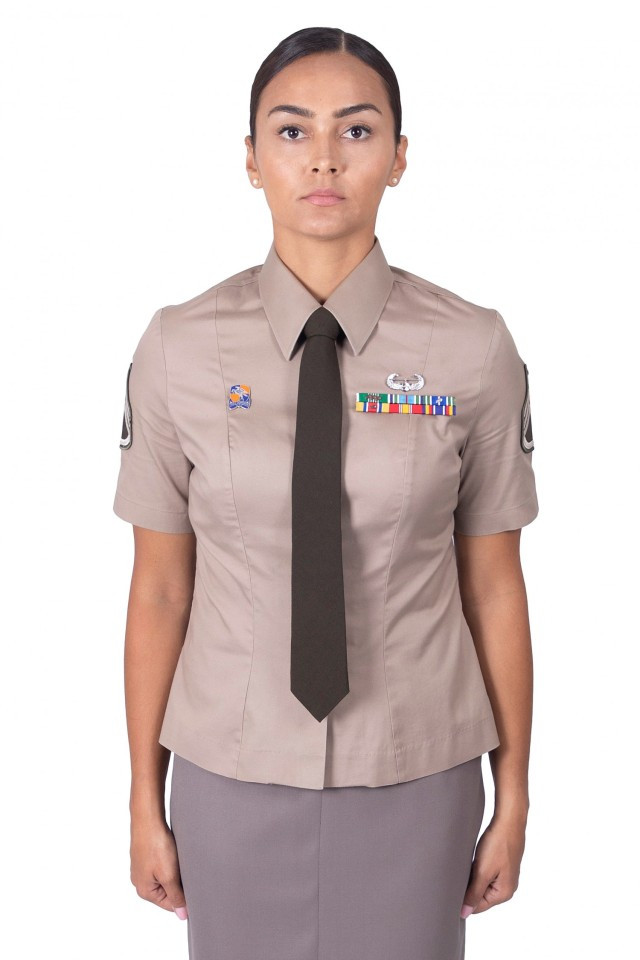The uniforms of the United States Army are more than just clothing; they are canvases displaying the rich history and distinct identities of its units. For the esteemed Soldiers of the 160th Special Operations Aviation Regiment (Airborne), famously known as the “Night Stalkers,” this symbolism is deeply profound. Recently, a significant chapter unfolded for this elite regiment with the introduction of a new shoulder sleeve insignia, marking a pivotal moment in their distinguished legacy.
Shoulder sleeve insignias are embroidered patches worn on Army uniforms, each uniquely designed to represent major formations. These patches serve as visual chronicles of a unit’s heraldic lineage, instantly communicating their history and affiliations. For the Night Stalkers, their journey has been represented by four significant patches over time, each reflecting their command headquarters: the 101st Airborne Division, 1st Special Operations Command, U.S. Army Special Operations Command, and most recently, the U.S. Army Special Operations Aviation Command (USASOAC).
On October 1st, at Fort Campbell, Kentucky, a shoulder-sleeve insignia ceremony was held, attended by Soldiers, families, and friends of the 160th SOAR (A). This event was not just a change in uniform; it symbolized a new era for the Night Stalkers as they officially adopted the USASOAC shoulder sleeve insignia.
 Col. John R. Evans awaiting command to begin patch placement
Col. John R. Evans awaiting command to begin patch placement
Colonel John R. Evans, then the regimental commander of the 160th Special Operations Aviation Regiment (Airborne), emphasized the significance of this transition. “For the first time, we have a patch that reflects our own identity as an aviation special operations force,” he stated. “This new patch is uniquely ours, and its history and lineage moving forward will be built by the deeds of our Soldiers.” This statement underscores the move towards a more self-defined identity for the Night Stalkers within the Army’s special operations framework.
The ceremony itself was a display of tradition and respect. Members of the USASOAC command team initiated the repatching process by placing the new insignia on Regimental Chief Warrant Officer 5 Ivan S. Murdock and Regimental Command Sergeant Major Greg M. Chambers of the 160th SOAR (A). Following this symbolic gesture, Colonel Evans and Command Sergeant Major Chambers continued the tradition by affixing the new patches onto the battalion command teams within the regiment.
 Col. John R. Evans placing patch on Lt. Col. Jeffery J. Bragg
Col. John R. Evans placing patch on Lt. Col. Jeffery J. Bragg
Spc. Arturo Dimas, from Company D, 2nd Battalion, 160th SOAR (A), aptly captured the sentiment surrounding the change: “It’s something that’s been long and coming. With a separate patch, it distinguishes the unit as an organization within the U.S. Army Special Operations Command.” This sentiment highlights the importance of visual identity in recognizing the specialized role of the 160th SOAR (A) within the larger military structure.
The design of the USASOAC patch is rich with symbolism, carefully chosen to represent the unit’s heritage and mission. It features a Fairbairn-Sykes fighting knife and upswept red wings forming a spearhead. This design is intentionally reminiscent of the 1st Special Service Force, a nod to special operations forces’ early roots. The spearhead symbolizes the 160th SOAR’s crucial role as the aviation component of the U.S. Army Special Operations Command, always at the tip of the spear in special operations missions.
 Col. John R. Evans placing patch on Maj. Keith Sandoval
Col. John R. Evans placing patch on Maj. Keith Sandoval
“A lot of thought went into the design of this patch and it reflects our history and lineage,” Colonel Evans elaborated. “It links us to SOF’s earliest heritage in World War II, but also recognizes the speed adaptability and versatility that special operations aviation brings to the modern and future fight.” He expressed confidence that “the deeds of the men and women who wear it will soon make it recognized and respected across our Army and our joint force.”
With this uniform change, the 160th SOAR (A) officially cemented its place within the USASOAC team. While Soldiers now wear the USASOAC shoulder sleeve insignia, they continue to proudly display their regiment crest, ensuring the enduring legacy of the Night Stalkers is honored alongside their evolving identity within army special operations aviation. This new patch on the Army Night Stalkers Uniform is more than just a piece of fabric; it’s a symbol of their specialized capabilities, rich history, and ongoing commitment to excellence.
